
It has taken 60 years, but scientists and engineers are finally ready to reach for the stars—our star, that is. And they’re confident they won’t get burned.
This summer, NASA will launch the Parker Solar Probe, an impressively heat-resistant spacecraft destined to glide closer to the surface of the Sun than any spacecraft before it. It will fly within about 6 million kilometers of the searing surface, more than seven times closer than earlier craft. If all goes to plan, the craft will be hurtling at 724,205km per hour and have its one-of-a-kind heat shield perfectly facing the surface as it makes those closest approaches. In about seven years, it will complete 24 orbits around the Sun and pass by Venus seven times.
All the while, the Parker probe will collect a constellation of data to help answer scientists’ burning questions—and solve some sizzling mysteries—about the orb of hot plasma that lights up our Solar System. Namely, it will try to help us finally understand why the Sun’s atmosphere is 300 times hotter than its surface, which itself is a balmy 5,727 degrees Celsius. This fact defies basic physics and to this day is unexplained. One of the leading hypotheses to account for the heat shift comes from famed physicist Eugene Parker, after whom the probe is named. In the mid-1950s, Parker theorized that the Sun’s super-heated corona could be explained by a complex system of plasma, magnetic fields, and energetic particles that spark solar explosions called “nanoflares.”
Scientists are thirsty for close-up data on those potential explosions as well as the cascade of energy called solar wind. With that data, they can put their hypotheses to the test. And in addition to helping us understand coronal heat, data on these sunny phenomena could help clear up poorly understood space weather, which can wreak havoc on satellites and power lines here on Earth.
In all, the Parker Solar Probe project is “the coolest, hottest mission under the Sun,” Nicky Fox told reporters Wednesday at a press viewing of the spacecraft at NASA's Goddard Space Flight Center in Greenbelt, Maryland. Fox is a Parker Solar Probe Project Scientist with the Johns Hopkins University Applied Physics Lab. She introduced the mission as “humanity’s first encounter with a star” and one that is “extremely historic.”
The initial idea to reach the Sun with a spacecraft came about in 1958, predating NASA’s operations, she noted. But it took six decades for technology to catch up with scientists’ dreams. The Parker Solar Probe is the realization of those visions—armed with the mother of all heat shields.
Taking the heat
The surface of the spacecraft will survive the brutal temperatures with an 11.43cm-thick (4.5 inches) carbon-composite shield, coated with a white ceramic layer. The outer white layer allows the probe to reflect back as much radiation as possible. At the closest approaches, the outer layer will face temperatures of 1,400 degrees Celsius. But the underside will maintain a much cooler 315-371 degrees Celsius, according to lead aerospace engineer Betsy Congdon, who spoke with Ars.
The shield sits on top of large radiator constructed with a titanium frame. This structure keeps the spacecraft’s payload in a cool, dark shadow as the craft swoops by the Sun. In fact, the scientists and engineers designing the craft were actually more concerned that its scientific instruments and equipment would freeze rather than melt during the mission. To avoid this, the instruments—which dot the outside of the back of the craft—are wrapped in thermal blankets and paired with individual, solar-powered heaters. These keep the instruments at a comfortable temperature of about 28 degrees Celsius.
Star power
The solar panels that power those instruments—as well as other electronics on board—are on wing-like flaps that extend out from under the radiator. Exposed to the intense radiation, these arrays are specially designed to handle the heat and are equipped with their own cooling system. That system involves a gallon-sized water tank and pump inside the craft that streams cool water through the arrays to keep them at operating temperature.
Also inside the craft is much of the communication equipment and a small fuel tank that powers the craft’s thrusters. These will autonomously fire in quick bursts to keep the probe aligned so that the heat shield is perfectly facing the Sun’s surface at all times. If the probe tilts more than just one degree off course, part of the heat-sensitive payload could be exposed to the Sun’s radiation, causing the craft to melt and deteriorate. But the craft has many redundancies to prevent this, Fox assured Ars.
Stellar data
While the craft is busy trying not to melt or freeze, a suite of scientific instruments will collect coveted solar data. There are basically four types of data that the instruments are after, according to Adam Szabo, chief of NASA’s Heliospheric Physics Laboratory. The first is local measurements of solar winds, so there's a set of instruments that measures particles, including protons, electrons, smidgens of ionized helium, and traces of heavier elements. “The instruments measure how fast they go, how hot they get, how many of them there are,” he told Ars.
A second set of instruments measures magnetic and electric fields, which can “radically complicate” the behavior of ions floating around. The third set tries to capture the highest energy particles. Lastly, there is a set of cameras that will capture close-ups of plasma as it comes off the corona.
Stardates
Those instruments, and the rest of the craft, are finishing up testing now. On Wednesday, scientists and engineers at Goddard were doing final checks on the equipment inside the craft before closing the doors for good. In the next few days, the craft will be sent to NASA’s Kennedy Space Center in Florida for further testing.
Currently, the launch date is set for July 31. On that timeline, it will fly by Venus in late September and reach the corona by early November. Scientists expect to start downloading data in March of 2019, research astrophysicist Nicki Viall told Ars.
With that data, “I think we will answer a lot of questions and have a whole bunch of new questions that we haven’t even thought of,” Viall said.
The craft is intended to orbit the Sun 24 times in about six years and 11 months, but Fox told Ars that the team expects it will last another year or two beyond that. When it eventually runs out of fuel, the Parker Solar Probe will be in a stable orbit, but it will begin to tilt, exposing its sensitive side to the searing heat. From there it will disintegrate into smaller and smaller pieces and become part of the dust cloud.













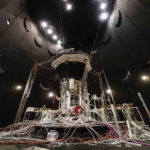



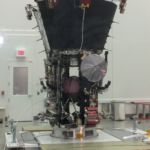
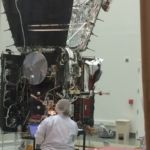

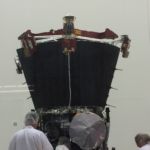
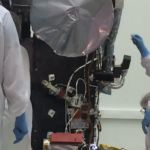
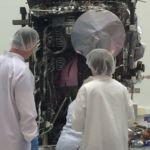



You must login or create an account to comment.